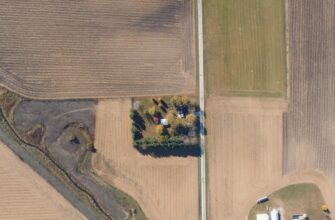- How to Recover Your Account Offline: Step-by-Step Guide & Solutions
- What Does “Offline Account Recovery” Actually Mean?
- Step-by-Step Guide to Recover Your Account Offline
- Step 1: Prepare Required Documentation
- Step 2: Contact Customer Support via Offline Channels
- Step 3: Complete Identity Verification
- Step 4: Follow Post-Verification Protocols
- Step 5: Strengthen Account Security
- Common Offline Recovery Challenges & Solutions
- FAQ: Offline Account Recovery Explained
How to Recover Your Account Offline: Step-by-Step Guide & Solutions
Losing access to your online accounts can be stressful, especially when internet-based recovery options fail. Whether you’ve forgotten passwords, lost 2FA devices, or face technical glitches, knowing how to recover account offline step by step is crucial. This guide provides a clear, actionable roadmap for regaining access through offline methods—no internet connection required during the verification process. Learn proven strategies to reclaim your accounts securely and efficiently.
What Does “Offline Account Recovery” Actually Mean?
Offline account recovery refers to regaining access to an account without using automated online tools like password reset emails or SMS codes. Instead, you interact directly with customer support via phone, physical mail, or in-person visits, providing tangible proof of identity. This method is essential when:
- You no longer have access to recovery email/phone numbers
- Two-factor authentication (2FA) devices are lost or malfunctioning
- Automated systems repeatedly fail or flag your account
- Sensitive accounts (banking, government) require higher security verification
Step-by-Step Guide to Recover Your Account Offline
Step 1: Prepare Required Documentation
Before contacting support, gather these essentials:
- Government-issued ID: Driver’s license, passport, or national ID card
- Proof of ownership: Account numbers, transaction records, or security question answers
- Device details: Serial numbers of registered devices (phones, tablets)
- Previous recovery codes: Printed or saved offline backups
Step 2: Contact Customer Support via Offline Channels
Initiate recovery using these offline routes:
- Phone support: Call official helplines (find numbers on billing statements or physical cards)
- In-person visits: For banks or local services, visit branches with your documents
- Postal mail: Send notarized letters with copies of IDs to registered addresses
Step 3: Complete Identity Verification
During your interaction:
- Answer security questions about account history (e.g., “First transaction amount?”)
- Provide ID photocopies with visible photos and signatures
- Verify personal details like SSN or DOB if required
Step 4: Follow Post-Verification Protocols
After successful verification:
- Receive temporary credentials via secure channels (e.g., mailed PIN)
- Reset passwords immediately using a trusted device
- Reconfigure 2FA methods with new backup options
Step 5: Strengthen Account Security
Prevent future lockouts with these measures:
- Store recovery codes in a fireproof safe or bank deposit box
- Add backup authentication methods (e.g., multiple trusted phone numbers)
- Update security questions with obscure, memorable answers
Common Offline Recovery Challenges & Solutions
- Challenge: Slow response times
Solution: Send documents via certified mail with tracking - Challenge: Incomplete documentation
Solution: Request exact requirements from support before submitting - Challenge: International account recovery
Solution: Use embassy-certified ID translations if needed
FAQ: Offline Account Recovery Explained
Q: How long does offline account recovery take?
A: Typically 3-10 business days, depending on verification complexity and mail delivery times. Financial accounts may take longer.
Q: Can I recover social media accounts offline?
A: Yes. Platforms like Facebook and Twitter offer mail-in forms for ID verification. Visit their Help Centers for specific addresses.
Q: What if I don’t have physical ID documents?
A: Contact support about alternative proofs—utility bills, bank statements, or affidavits signed by notaries may be accepted.
Q: Is offline recovery safer than online methods?
A: Yes, for high-risk accounts. In-person verification reduces phishing risks, but always confirm contact details via official websites.
Q: Do all services offer offline recovery options?
A> Most critical services (banks, email providers, government portals) do, but smaller apps may not. Check their Terms of Service.
Conclusion: Mastering offline account recovery puts you back in control when digital solutions fail. By preparing documentation, using verified channels, and reinforcing security post-recovery, you can navigate lockouts confidently. Bookmark this guide as your emergency reference for seamless account restoration.








